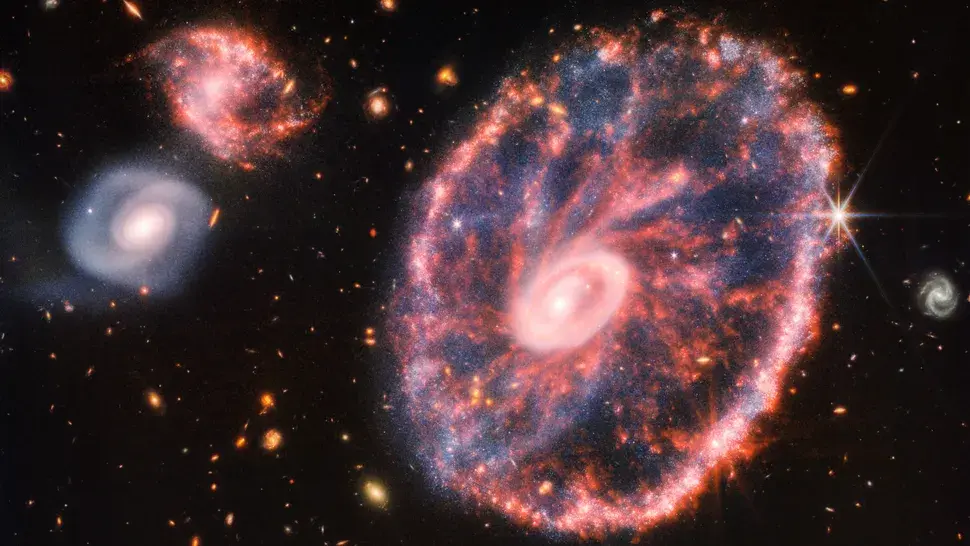Some Awesome James Webb Space Telescope Images
- Editor OGN Daily
- Mar 3, 2024
- 2 min read
The $10 billion James Webb Space Telescope (JWST) shared its debut image with the world on 12 July 2022, peering deeper into the universe than any telescope before it.
Since then, it has captured the mystery and beauty of space in image after dazzling image, both confirming and confounding longstanding theories about how the universe works. Here are a handful of the telescope's finest observations.

When a baby star throws a tantrum, the whole galaxy hears about it. Here, a newborn star called HH 211, located around 1,000 light-years from Earth in the Perseus constellation, spews out supersonic streams of gas and dust into space, triggering visually stunning shockwaves that researchers say "look like lightsabers." Our own sun may have looked similar, billions of years ago.

Spiral galaxies like our Milky Way are common throughout the universe. As part of a recent survey, JWST zoomed in on 19 known spiral galaxies, revealing their anatomy in stunning detail. Here, clouds of dust surrounding the galaxy glow in infrared light, appearing red and orange.

The orange, yellow and blue image features the interstellar atomic hydrogen clouds of the 1,630-light-year-wide nebula N79, located in the Large Magellanic Cloud, a satellite galaxy of the Milky Way. This region is actively forming stars and remains virtually unexplored by astronomers.

Like a celestial nautilus shell, the eerie 'Phantom Galaxy' swirls through space about 32 million light-years from Earth. Scientists call it a "grand design spiral," due to how prominent and well-defined the galaxy's spiral arms are.

This raw JWST image of Saturn taken in June 2023 hasn't been fully processed, but that doesn't stop it from being utterly gorgeous. Only Saturn's rings glow in this eerie black-and-white image, which has yet to receive the post-processing treatment to render our cosmic neighbour in its familiar yellow- and gold-banded look.

A young star blasts streams of gas into surrounding dust clouds, creating a fiery hourglass within the constellation Taurus.

The appropriately named Cartwheel Galaxy, located about 500 light-years from Earth, is a spiral galaxy shrouded in hot dust. Once, it likely looked very similar to the Milky Way -however, an ancient collision with a smaller galaxy gave it this distinct wagon-wheel-like shape.

A ghostly shroud of dust cloaks the infamous Pillars of Creation in this showcase of JWST's mid-infrared instrument (MIRI). The stars hidden within the dust clouds aren't bright enough to appear for MIRI, creating this somewhat spooky image.
Today's Articles
High School Sweethearts: 1950s teens reignite their romance six decades later and he just popped the question.
Top 5: Foods a longevity experts eats every day to age well, live longer, and reduce the risk of disease.
Top Performers: Trio of last week's most popular articles, plus the most watched mood boosting video.



